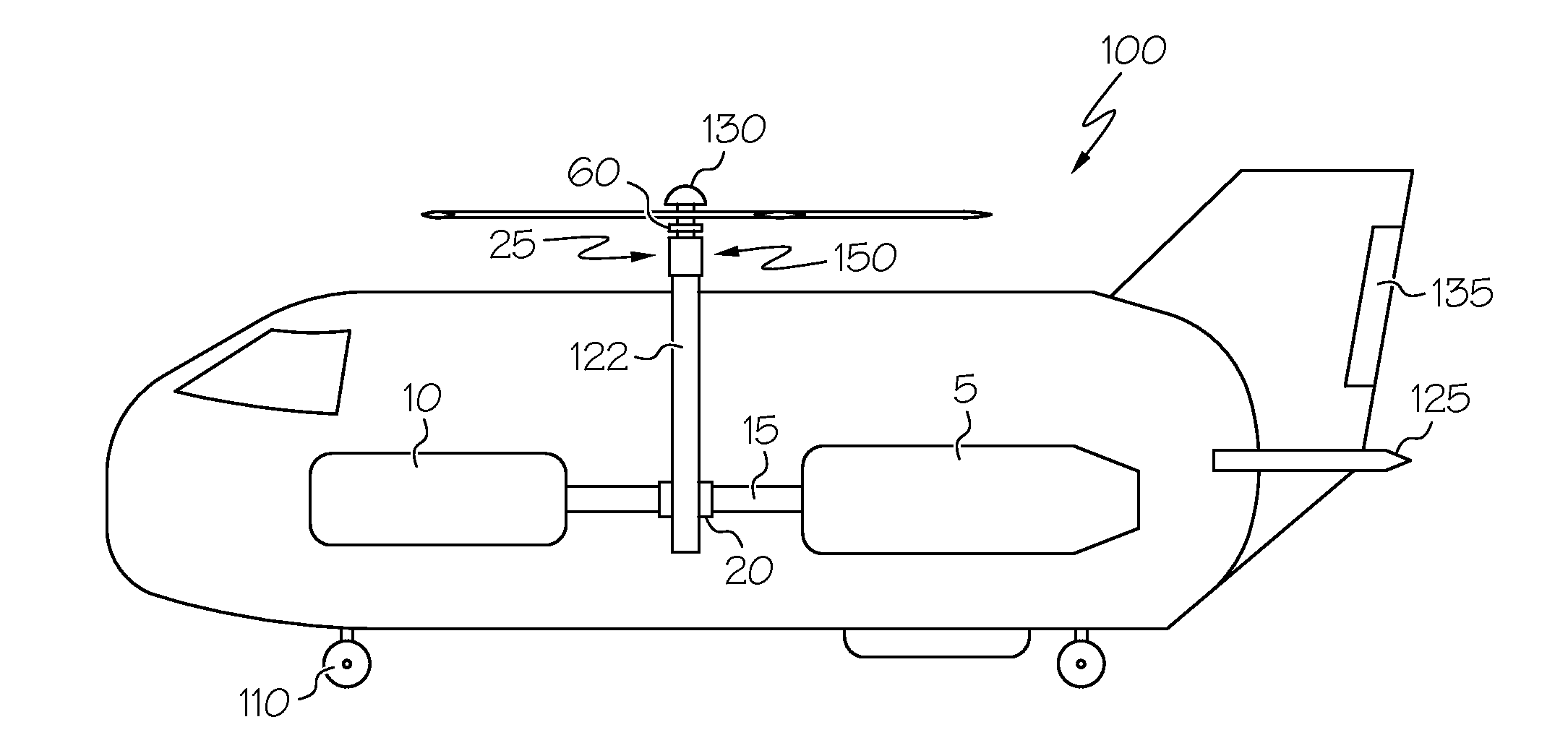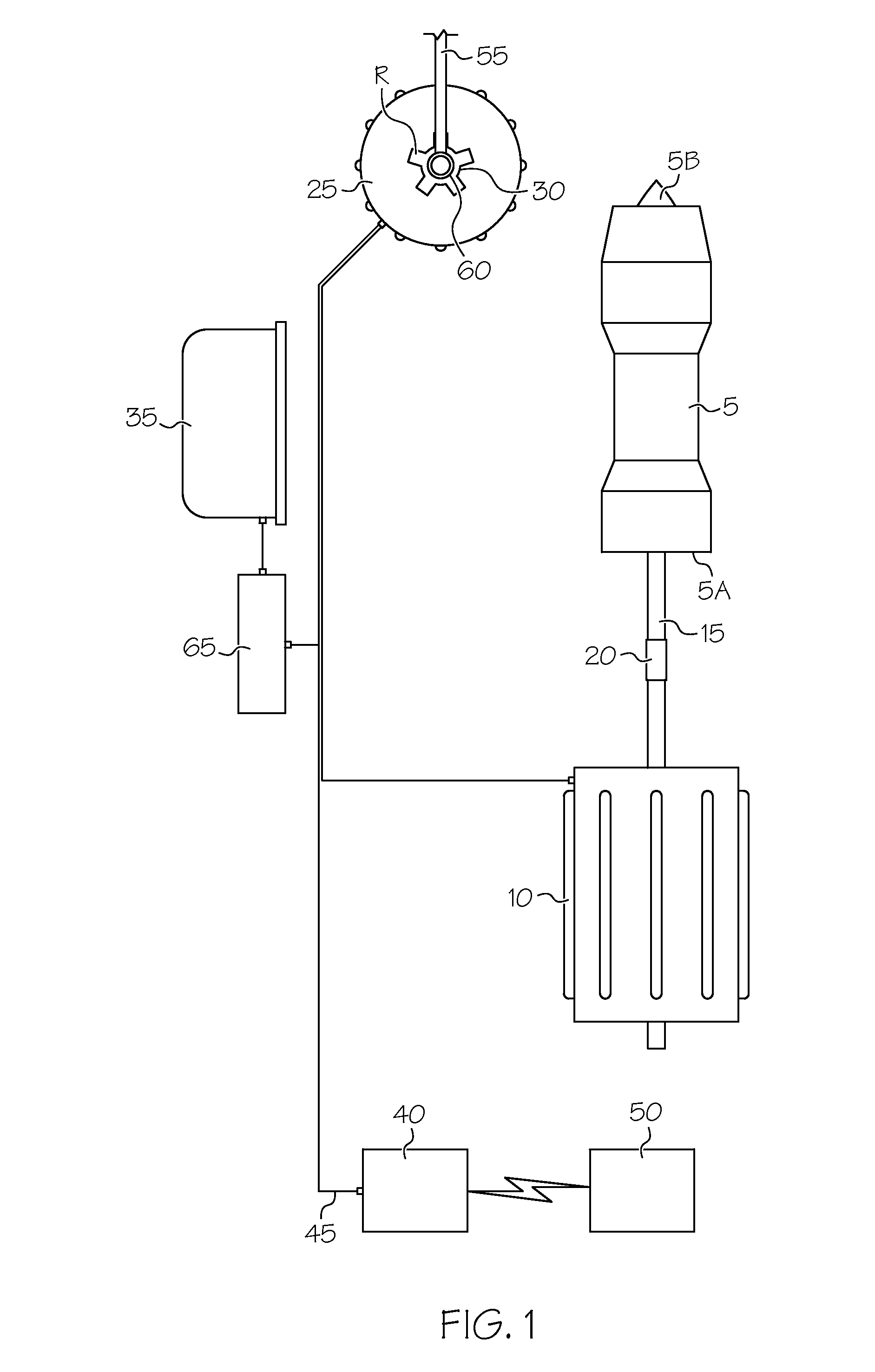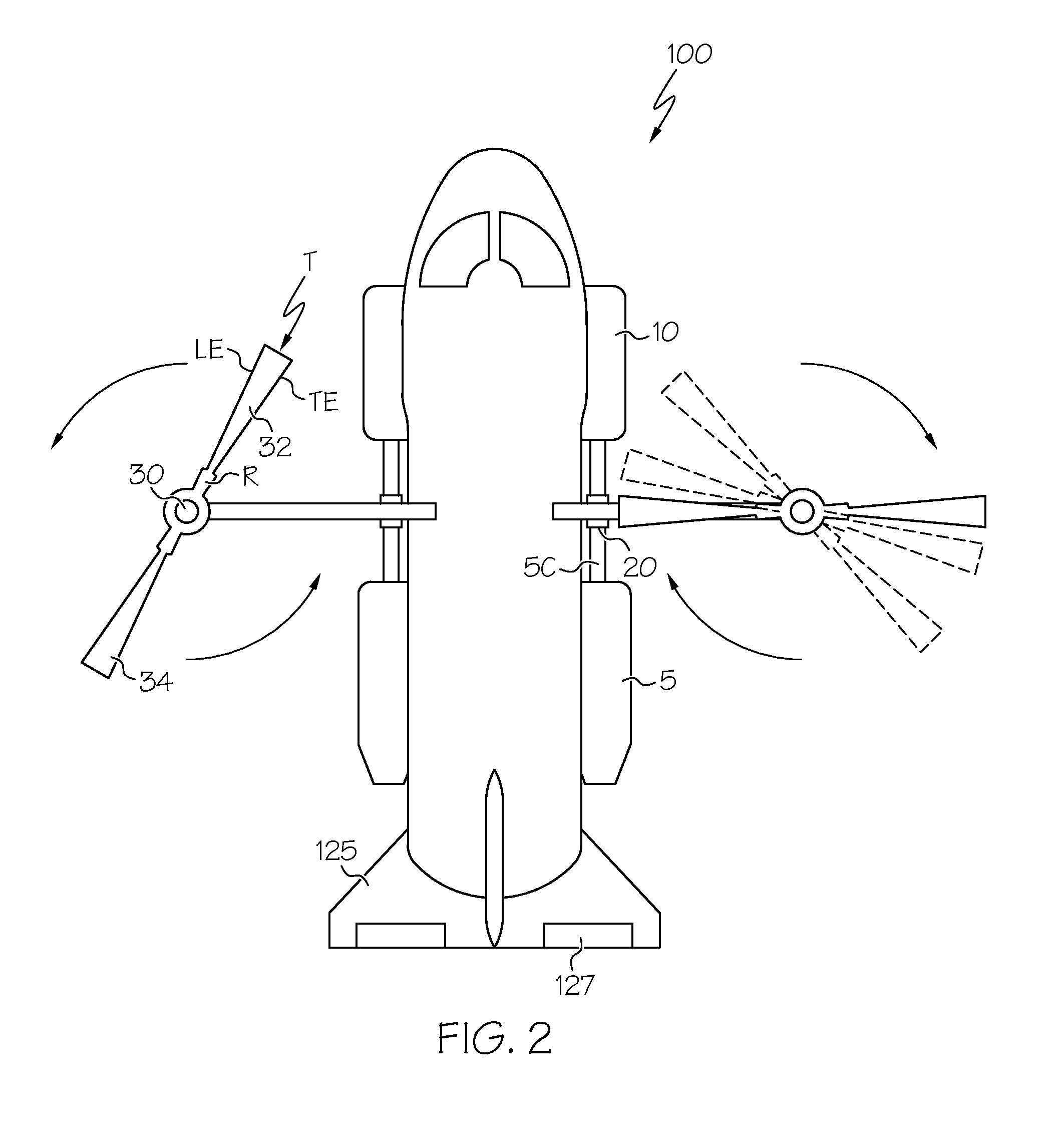Aircraft using turbo-electric hybrid propulsion system for multi-mode operation
a hybrid propulsion system and aircraft technology, applied in the direction of sustainable transportation, transportation and packaging, energy-saving board measures, etc., can solve the problems of helicopters exceedingly vulnerable to infrared (ir) seeking weaponry attacks, significant drawbacks of conventional gas turbine-based propulsion systems for certain types, etc., to achieve convenient turning in a preferred direction, improve aircraft maneuverability, and adapt quickly
- Summary
- Abstract
- Description
- Claims
- Application Information
AI Technical Summary
Benefits of technology
Problems solved by technology
Method used
Image
Examples
Embodiment Construction
[0016]Referring initially to FIG. 1, a hybrid propulsion system 1 according to an embodiment of the present invention is shown. In the present context, a hybrid propulsion system is one that provides motive power for an aircraft or other vehicle from two or more disparate power sources. In a more particular form, the hybrid propulsion system 1 is a turbo-electric propulsion system that is particularly well-suited to powering a rotary-winged aircraft such as a helicopter or autogyro, as well as a fixed-wing aircraft that will be discussed in more detail below. The invention disclosed herein achieves that objective through shaft power provided by an internal combustion engine and electric power provided by one or more batteries. Both power sources, which are described below in more detail, can convert their energy into a form useable by an electric motor that can be used to turn one or more lifting surfaces on an aircraft, as well as one or more propulsive members in a watercraft or l...
PUM
 Login to View More
Login to View More Abstract
Description
Claims
Application Information
 Login to View More
Login to View More - R&D
- Intellectual Property
- Life Sciences
- Materials
- Tech Scout
- Unparalleled Data Quality
- Higher Quality Content
- 60% Fewer Hallucinations
Browse by: Latest US Patents, China's latest patents, Technical Efficacy Thesaurus, Application Domain, Technology Topic, Popular Technical Reports.
© 2025 PatSnap. All rights reserved.Legal|Privacy policy|Modern Slavery Act Transparency Statement|Sitemap|About US| Contact US: help@patsnap.com



